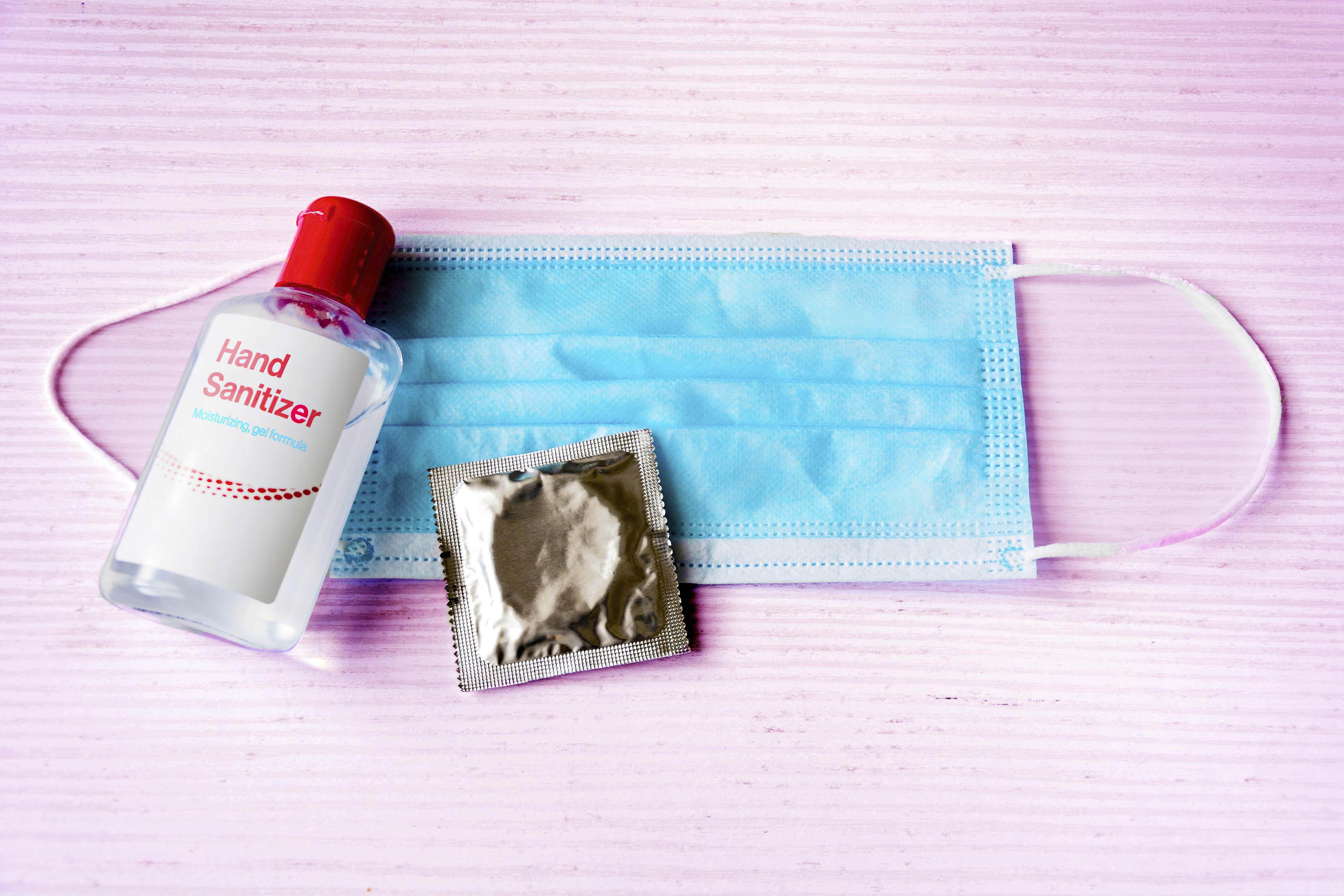You may not be familiar with the term “fluid bonding,” but the concept probably isn’t as foreign as it sounds. In fact, if you’re a sexually active person, chances are you’ve even done it at some point in your life. When you did, however, you probably just referred to it as, “sex without a condom,” or any of a number of less tasteful colloquialisms sometimes used to refer to that act.
“Fluid bonding happens when partners consciously decide to have sex without condoms or dental dams and exchange bodily fluids,” says Tyomi Morgan, certified sexologist and in-house sexpert for sex toy company Sweet Vibes. Depending on the people and sex acts involved, those fluids might include semen, saliva, vaginal fluids, anal secretions and blood.
Essentially, fluid bonding is just a term for sex without the use of barriers, one that acknowledges the real seriousness of that act. While foregoing a condom is often a choice many people make lightly, drunkenly or simply as their default approach to sex, it’s a serious decision that can carry a variety of mental, physical and emotional consequences ranging from increased intimacy to the creation of literal human life.
Yes, we all know we should be using condoms, and I’m not here to give you the same lecture you got in eighth grade health class. That said, we also all know how easy it can be to justify ditching a condom, especially with the widespread availability of long-acting birth control. That obviously still leaves barrier-free sex partners vulnerable to STIs, but having sex without a condom also involves many other factors that are often left out of the greater sexual health discourse, one that usually focuses on pregnancy and STI prevention while largely ignoring the mental and emotional effects of condomless sex.
The concept of fluid bonding reframes that narrative, highlighting the seriousness of sex sans condoms and the many ways it can affect a person’s life and relationships, in addition to their health. Barrier-free sex is more than just skipping condoms, and acknowledging it for what it really is — the literal exchange of bodily fluids with another person — emphasizes the gravity of a choice many of us tend to make all too carelessly.
Fluid bonding is a choice — an important one
One of the biggest distinctions that sets fluid bonding apart from the way we often talk about barrier-free sex is the emphasis that fluid bonding with a partner is an active, conscious choice — an important one that should be made carefully.
“Fluid bonding is the intentional decision not to use barrier methods when engaging in sex that can result in the exchange of fluids,” says Shanae “HonestlyNae” Adams, a sex expert, educator and clinical counselor. It’s more than just not using a condom; it’s a pact between two people who acknowledge the risks, rewards and seriousness of barrier-free sex, as well as their mutual responsibility in protecting each other’s health and wellbeing.
Deciding to forego barriers during sex obviously puts both partners at an increased risk of pregnancy and STIs, and while fluid bonding may not always coincide with a monogamy agreement, it does (or should) carry some sort of agreed-upon approach to STI-prevention, such as a commitment to using barriers with any other partners and/or regular STI testing.
“Exposure to body fluids can put partners at risk of pregnancy and sexually transmitted infections,” says Tatyannah King, a sex blogger and graduate student at the Widener University Center for Human Sexuality Studies. “That is why getting checked for infections regularly is especially important while fluid bonding.”
It’s also important to have frank conversations about STI testing, status and pregnancy prevention before deciding to fluid bond with a partner.
“Knowing STI status allows each person to consciously enter into fluid bonding with full awareness of how their health can be affected,” says Morgan. “Having a mutuality about pregnancy prevention establishes a shared agreement on the use of another form of contraception to prevent unintended pregnancy. Discussing these things before the act sets the stage for conscious, safer sex.”
Why fluid bond?
The question of why two people having sex might choose to do it without a condom may seem like a no brainer — because sex without a condom feels better, duh — but the reality is, partners may choose to fluid bond for a wide variety of reasons. Yes, wanting to enhance the physical sensations of sex might well be one of them, but there are plenty of other factors that may influence the decision.
“Couples should have a clear intention as to why fluid bonding is an option they want to pursue,” says Adams, but those intentions can vary widely. Reasons for fluid bonding can be physical, emotional or part of a bigger decision, as in the case of couples trying to conceive.
For some, the decision to fluid bond might be purely about increasing physical sensitivity and stimulation, while for others, the idea of barrier-free sex may be a turn-on in and of itself. “Psychologically, some people are aroused by exchanging fluids with a partner,” says Morgan, adding that in some cases, that arousal may also be linked to a heightened sense of emotional intimacy.
“Fluid bonding can be a way to enhance intimacy,” echoes King. “It can help you feel closer to your partner romantically and emotionally because you might feel like sex makes you more emotionally vulnerable when you’re ‘fully naked’ with each other.” For some couples, fluid bonding might also represent a relationship milestone or signal an increased level of commitment.
That said, fluid bonding can mean different things to different people, even two people in a fluid-bonded partnership. “There are people who only engage in fluid bonding if they’re in love,” says King. “Others only do it if they’re in a committed relationship, and some people don’t attach a romantic meaning to fluid bonding at all.” This wide range of attitudes toward fluid bonding means it’s important for partners to be able to have frank conversations about their relationship and their expectations for fluid bonding before taking the condoms out of the bedroom.
“It’s a good idea to clearly define your relationship and set boundaries before deciding to fluid bond with someone,” says King. “As a sex blogger, I’ve heard countless scenarios where one person assumes that they’re automatically in a relationship just because they aren’t using condoms anymore, only to find out that the person they’re sleeping with doesn’t view things the same way they do.”
While the reasons and meaning behind fluid bonding can vary significantly from couple to couple, every instance of fluid bonding has at least one thing in common: an informed agreement between two sex-having adults who treat condomless sex the way sex-having adults should — as a serious decision that should not be made lightly. Condomless sex, like sex in general, can mean very different things to different people at different times. But whatever it means to you, it still involves the literal exchange of bodily fluids with another human being. That’s a big deal. We should act like it.
Whether you’re looking to get into shape, or just get out of a funk, The Charge has got you covered. Sign up for our new wellness newsletter today.


























